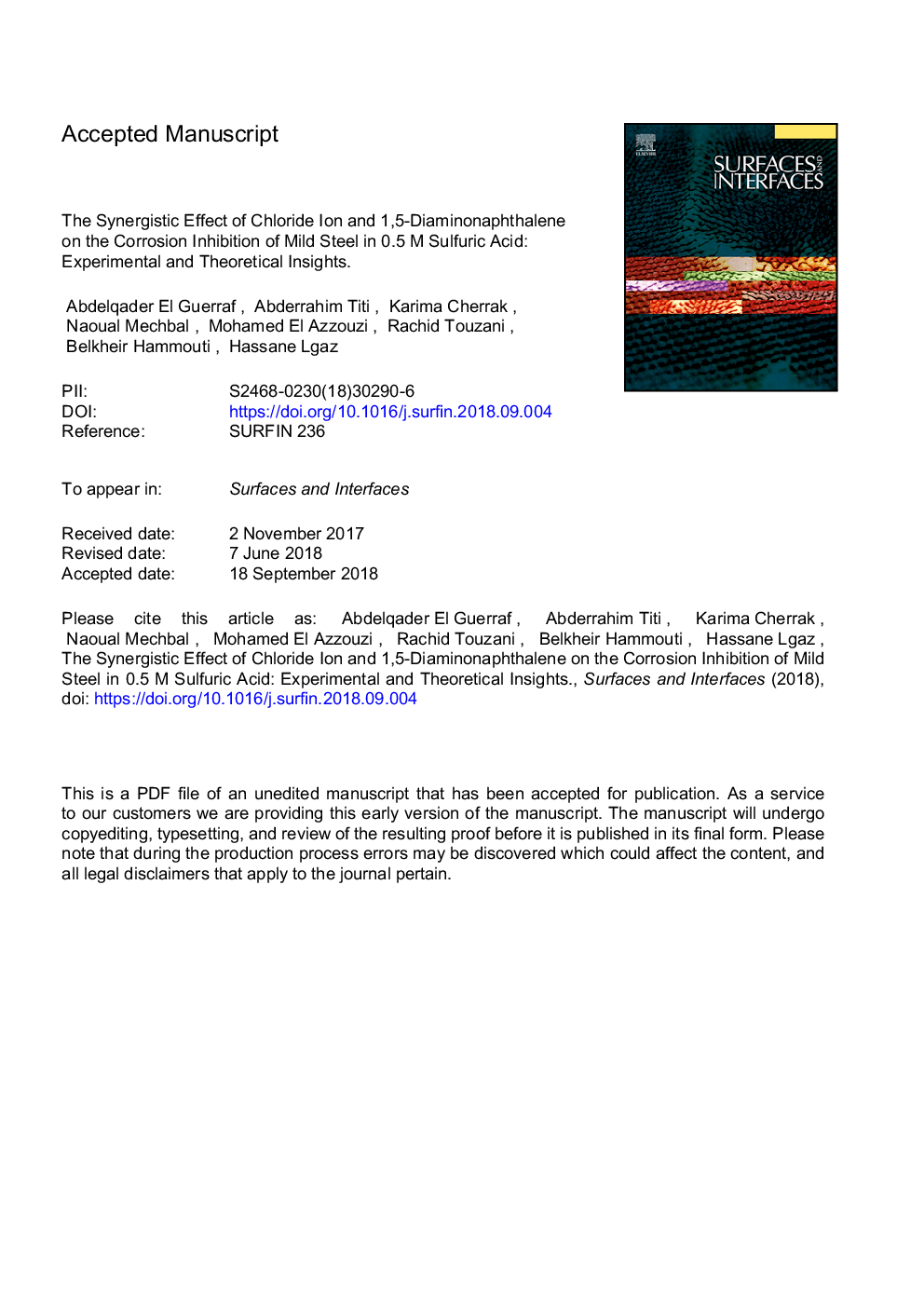| Article ID | Journal | Published Year | Pages | File Type |
|---|---|---|---|---|
| 11003242 | Surfaces and Interfaces | 2018 | 39 Pages |
Abstract
The inhibition efficiency of 1,5-Diaminonaphthalene (1,5DNA) compound was studied by itself as well as in a mixture that included sodium chloride (NaCl), noted [1.5DNA][Clâ], for mild steel in 0.5â¯M sulfuric acid. Gravimetric, electrochemical techniques and computational chemistry calculations were utilized for the assessment of corrosion inhibition efficiency and explanation of the mechanism involved during the corrosion inhibition process. The results show that inhibition efficiencies on mild steel increase with increase in concentration of the inhibitor and enhancement in inhibition efficiency was observed on addition of sodium chloride due to synergism. This inhibition has been attributed to the stabilization of adsorbed inhibitor film and, consequently, increasing its inhibitive properties. The [1.5DNA][Clâ] acts as mixed type inhibitor and the Nyquist curves show that with the increase in the concentration, the charge transfer resistance Rct increased. In addition, [1.5DNA][Clâ] obeyed Langmuir monolayer adsorption isotherm. Moreover, Molecular Dynamic Simulations and DFT calculations showed that [1.5DNA][Clâ] owned a higher adsorption ability.
Related Topics
Physical Sciences and Engineering
Chemical Engineering
Colloid and Surface Chemistry
Authors
Abdelqader El Guerraf, Abderrahim Titi, Karima Cherrak, Naoual Mechbal, Mohamed El Azzouzi, Rachid Touzani, Belkheir Hammouti, Hassane Lgaz,
